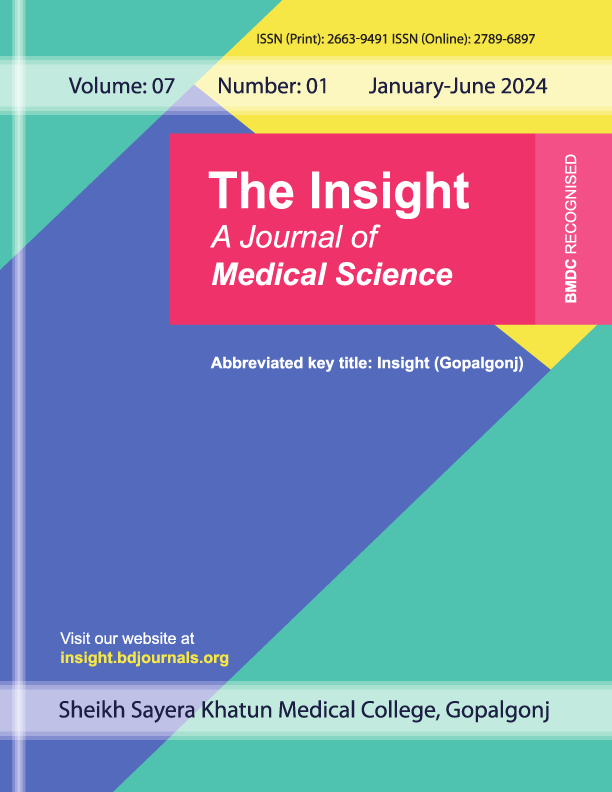Incidence and Risk Factors for Post Dural Puncture Headache (PDPH) in Patients Undergoing Subdural Anesthesia
Publiée 2024-11-15
Mots-clés
- Post-dural Puncture Headache,
- Cerebrospinal Fluid,
- Subdural Anesthesia
(c) Copyright The Insight 2024

Ce travail est disponible sous la licence Creative Commons Attribution 4.0 International .
Comment citer
Résumé
Introduction: A typical side effect after spinal anesthesia or lumbar puncture is post-dural puncture headache (PDPH), which is characterized by excruciating headaches from CSF leakage. Patient demographics and procedural factors, including age, gender, body mass index (BMI), needle size, and number of puncture attempts, hydration status of the patient during post-operative period all influence the incidence of post-dural puncture headache (PDPH). The purpose of this study is to look into the incidence of PDPH and how it relates to these important factors. Methods & Materials: The study was conducted at Sheikh Hasina Medical College, Jamalpur, Bangladesh a tertiary care hospital from March, 2024 to May, 2024. Patients had both elective and urgent surgical operations under subdural anesthesia. The study included 200 patients in total, ranging in age from 18 to 65, who satisfied the inclusion requirements. Software for statistical analysis, SPSS version 26, was used. Statistical significance was attained when the p-value was less than 0.05. Result: A significant p-value of 0.02 was found in the research of 200 patients, indicating that females had a higher incidence of post-dural puncture headache (PDPH) (30%) than males (15%). The age categories of 41–50 (37.5%) and 51–65 (30%) had the highest rates of PDPH, with significant correlations (p = 0.01 and 0.02). Higher PDPH rates (66.7%, p < 0.001) were significantly correlated with more puncture attempts (>2). Incidence of PDPH was also shown to be higher in patients using wide bore needles (23G; 40%, p = 0.001). Dehydration of the patient during post- operative period is significantly higher (60%, P=0.003) incidence to develop PDPH. Conclusion: This study emphasizes age, gender, number of puncture attempts, needle size and hydration status of the patient during post-operative period variables linked to PDPH. A higher rate of perforation attempts, older age groups, females, wide bore needles and dehydration were all substantially associated with PDPH.



